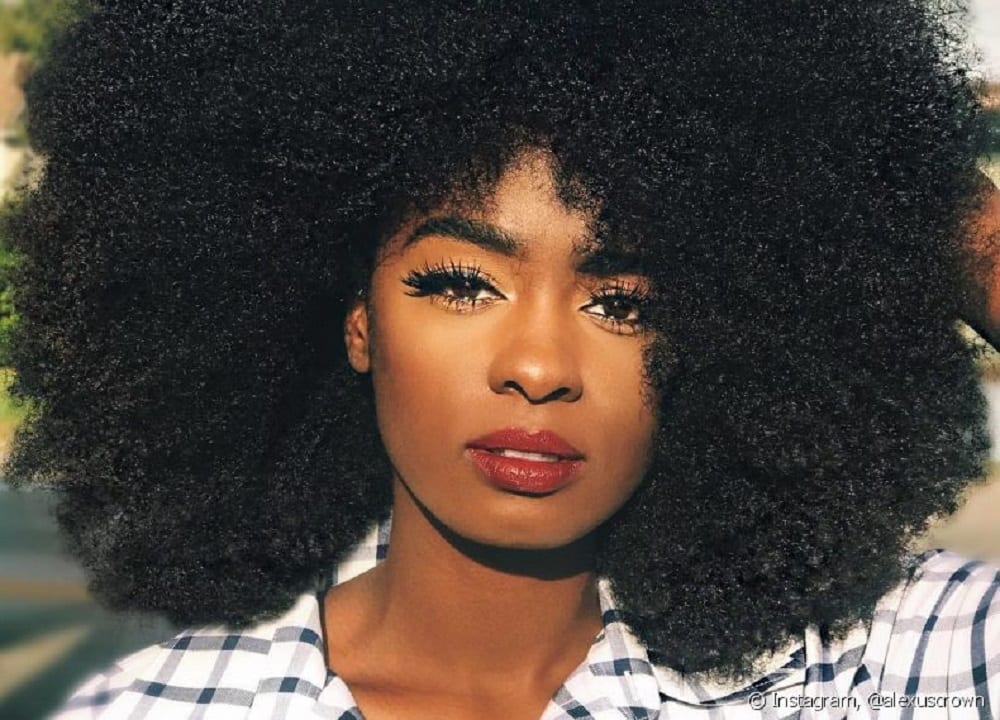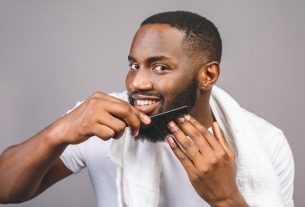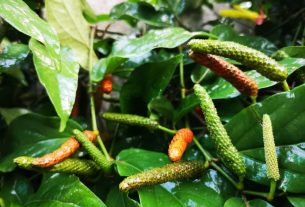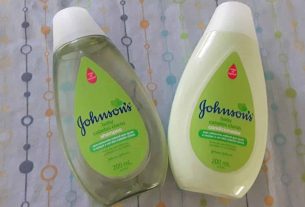There are four types of hair, and for each there are subtypes. Furthermore, each type requires specific care, and that’s what we’re going to talk about.
You are probably one of the people who think there are only two types of hair: straight and curly. It turns out that between these two extremes, there is a range of varieties. Furthermore, for you to take good care of your curls, you need to know which spectrum your hair falls into.
Basically there are four types of hair, and within each one there are three variations. See the following table:
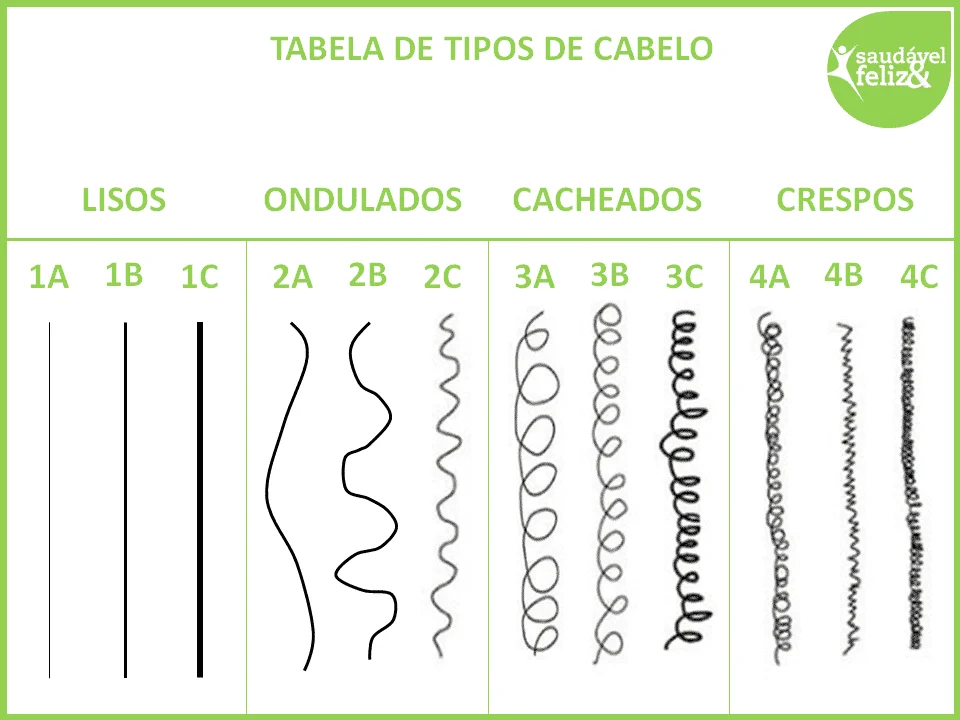
Initially, hair is divided into 4 large groups. They start at 1 and end at 4. This first classification concerns the curvature of the hair, so number 1 is the straight hair type, while number 4 covers curly hair.
When it comes to the second classification, there is representation by the letters (a), (b) and (c). They are responsible for pointing out the different textures that the thread itself can have, being thicker or thinner, for example.
Did you manage to follow along or are you still a bit confused? We will explain it to you one by one.
Check hair types
Type 1

Initially, this is one of the types of extremely lank hair. There is no wave of any kind here. The hair on this list tends to be very oily. This is because the lack of curvature means that the oil produced naturally by the hair can quickly pass through the length and reach the ends.
1A
This type has very thin strands that stick to the head. They are often called hair that the “cow licked”. This type of lock also doesn’t hold anything back.
1B
1B has a lot of oil and the medium strand is fuller. It holds hairpins and other accessories, as well as holding curls made with a curling iron, for example.
1C
Thicker strands weigh down the hair, making it the most difficult type to style. Even so, it still has the same characteristic of being very oily throughout the entire length.
Type 2
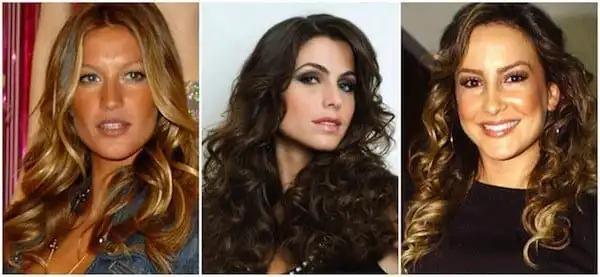
Firstly, in this type of hair, the thicker strands weigh down the hair, making it the most difficult type to style. Even so, it continues to have the same characteristic of a lot of oiliness along the entire length as Type 1.
2A
This type of hair doesn’t have a lot of volume, especially at the roots. This is because of the oiliness. The length is not so affected. The wire is thin and has an “S” shape, but very elongated. Plus, because of the natural wave, it’s easier to style.
2B
2B has a tendency to have frizz. Furthermore, the modeling of the hair is a little more compromised, as the “S” is already more defined.
2C
The “S” is so closed that it begins to form some curls, spaced throughout the hair. The formation of curls means that the strands are no longer stuck to the head, resulting in hair with more volume and movement.
Type 3
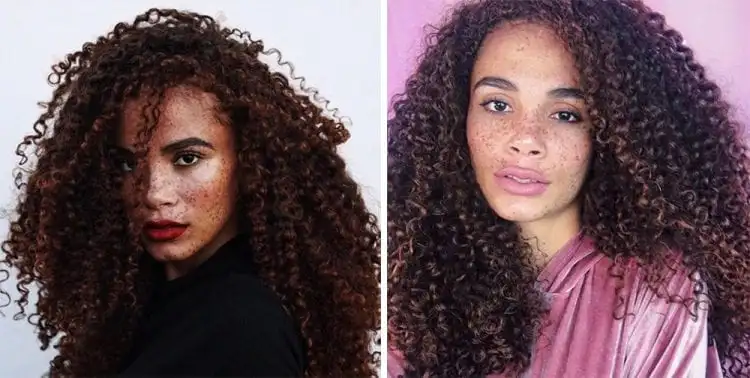
We go into curly hair. Despite this, depending on the level of curvature, it may still have some traces of the previous types. Furthermore, they are drier, as the oil produced at the roots cannot reach the ends, due to the curls. Furthermore, they tend to be more opaque. The presence of curls reduces the surface, that is, less light reaches it and, therefore, it is less reflected, resulting in less shiny hair.
3A
It has a smoother root, but soon the curls begin to appear. Furthermore, they are very big and wide, they even look like they were made with curling irons. They still have traces of straight hair and the strands are thin, the curls fall apart easily. They do not maintain volume, giving the impression that they “wither” throughout the day.
3B
In 3B, the curls are born from the roots and their texture tends to be rougher. The yarn is fuller and forms tighter curls. As the curl is more defined, it tends not to fall apart for any reason. Furthermore, the hair is drier and more voluminous.
3C
3C hair is full of springs. Furthermore, the curls are very closed and also start from the roots. It has a higher level of dryness than the previous subcategories, especially on the ends. Finally, it keeps the curls for even longer days, as they are extremely defined. Wires of this type tend to be thin and fragile.
Type 4
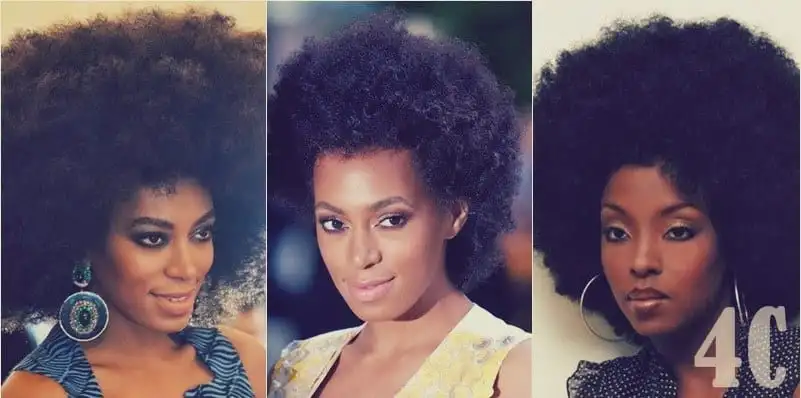
The dryness of this last type is even greater than that of the previous types. This is because the oil cannot reach the length and ends due to the curvature. They are also known for having a lot of volume, and that is where the beauty of this type of yarn lies. The curvature increases so much in this type that its last category even becomes shapeless.
4A
This type of hair has super closed curls, very defined, but which differ when wet. It loses a little curvature when the strands are damp, whereas 4A has well-structured curls, regardless of whether they are wet or dry. Furthermore, in this subcategory, the hair already has a drier appearance.
4B
Volume is the main characteristic of this sub-item. Black power is now possible with these wires. As the curls “stick” to each other and get tangled, they are more fragile and deserve a lot of care when untangling. Some variations may adopt a zigzag or “Z” shape and are very dry.
4C
The hair alternates between strands that follow a zigzag pattern and strands that have no definition. Due to the curvature being even closer together, 4C hair suffers from the shrinkage factor. Furthermore, they are extremely dry.
How to care for each type of hair
Firstly, due to the differences between hair types, the care required is also different. The hair routine, in fact, can vary from washing, through finishing, to deciding how to sleep so that they wake up looking wonderful the next day.
Find out what to do according to each of the hair types presented above:
Type 1 care
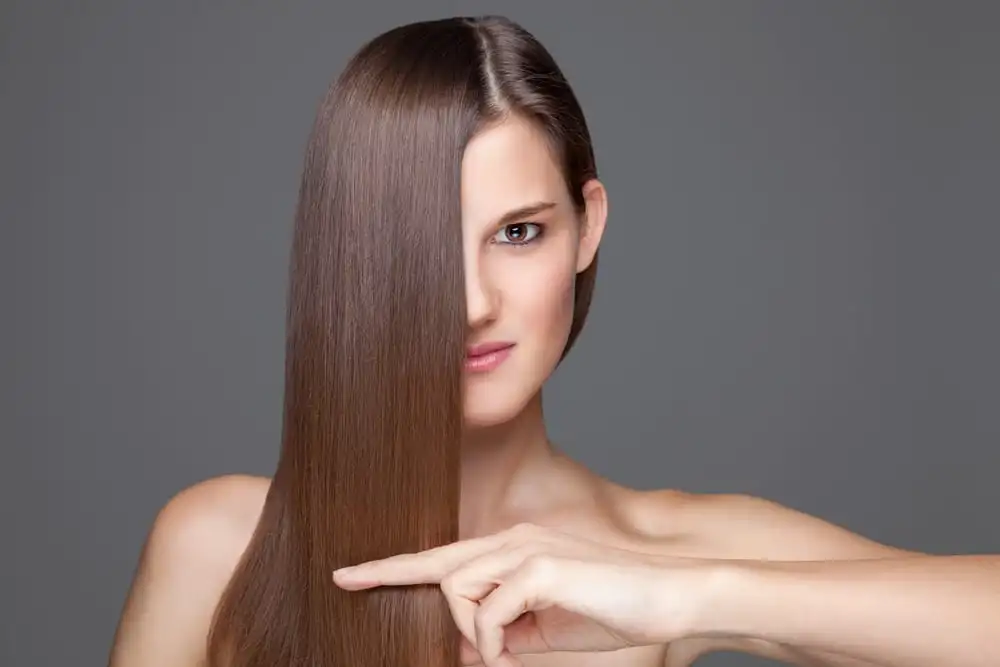
Firstly, straight hair needs to be washed every day. It is necessary to use anti-residue shampoos to combat the dreaded dandruff.
Furthermore, like other hair types, straight hair also needs hydration to stay healthy. Furthermore, hydration will help reduce excessive oiliness. The ideal, then, is to hydrate them once or twice a month.
When we talk about conditioner, choose transparent ones instead of milky ones. Furthermore, the products need to be lighter so as not to weigh down the hair and thus allow it to move. Leave-in is the perfect type, as it does not contain oils in its composition.
Furthermore, several versions already have thermal protector in their formulation, which will leave your hair super protected from the excessive heat of the straightener and dryer.
Type 2 care
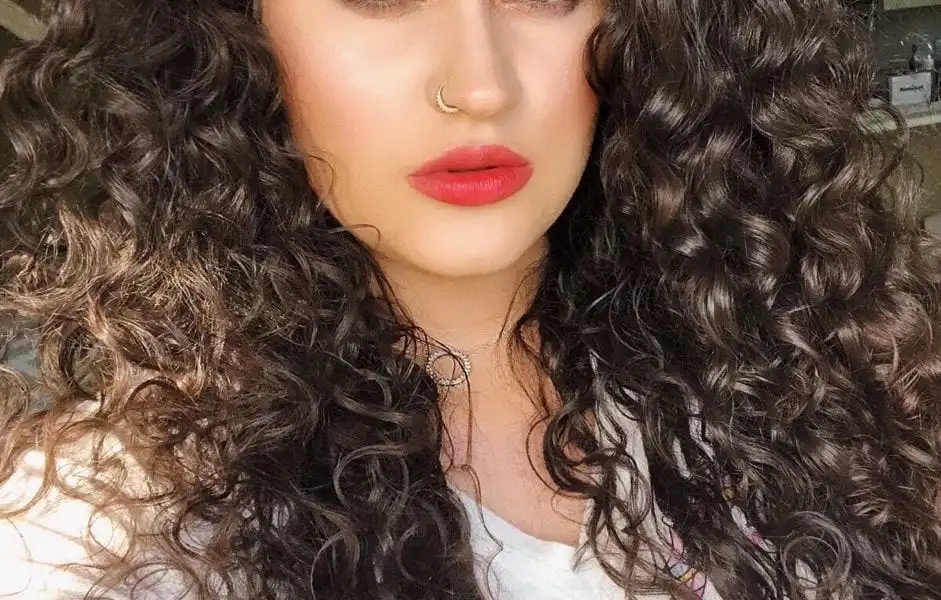
Firstly, an intermediate shampoo is needed. It cannot be too milky or transparent. Furthermore, hydration here is even more important than in previous hair types.
Finally, most types of finishing products are allowed here.
Type 3 care
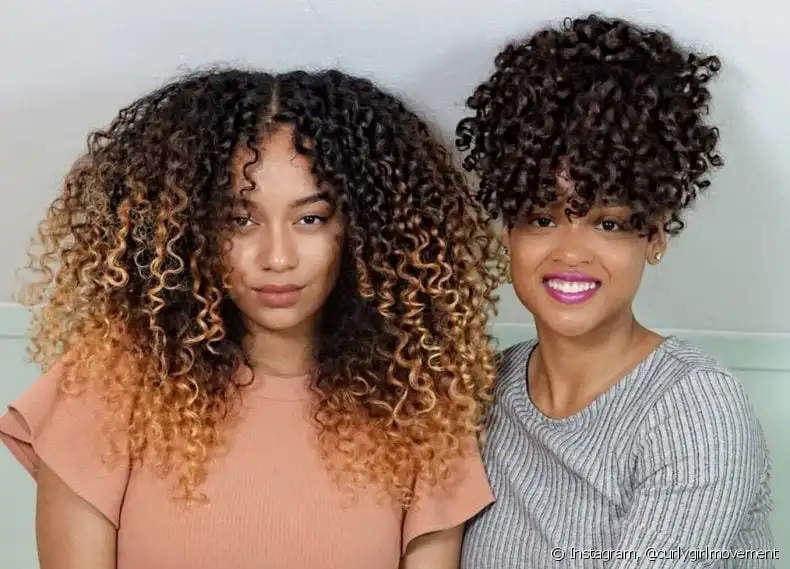
The priority of shampoos for this type of curly hair should be milky hair. They will not harm the hair, quite the opposite: they will help to make it more hydrated. It is recommended that an anti-residue shampoo be used once a month, or another shampoo that has a more cleaning action.
Due to the tendency to become dry, it is necessary to focus on hydration. This task will be performed by masks and moisturizing creams. When it comes to conditioner, the whiter and more opaque the better. Furthermore, there are countless possibilities and options for finishing products, such as: styling cream, leave-in, gelatin, gel and so on.
Type 4 care
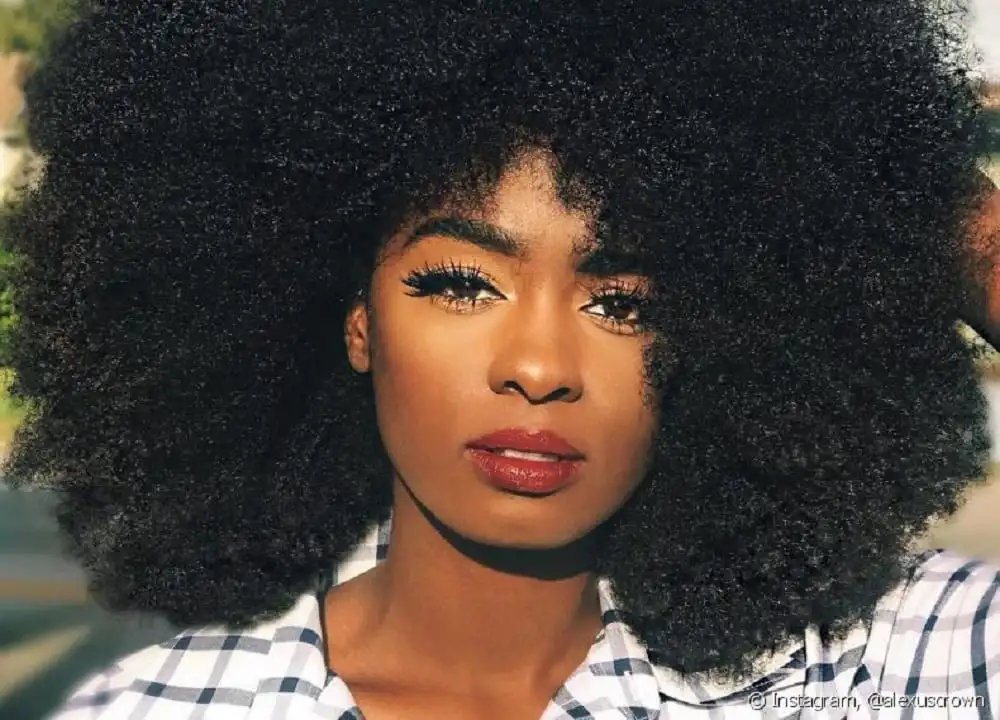
Finally, among the various types of hair, curly hair tends to be the driest and most voluminous. The hair needs to be washed with a moisturizing shampoo. From time to time it is necessary to use anti-residue shampoos, due to the accumulation of products in the hair it must be eliminated. Furthermore, this type of hair needs to be washed once a week.
When it comes to hydration, it needs to be done once a week. This type of hair needs conditioners that are whiter and milkier, as this guarantees an even more moisturizing and cuticle-closing action.
Did you like this article? Did you manage to discover, among these different types of hair, what curvature yours has?
And, if you like talking about hair care, be sure to also read: How to hide gray hair without having to dye your hair
Source: Healthy Minute
Images: Fernanda Belíssimo Things by Diva Patricinha Esperta Chata de Galocha Brazilian Black Beauty Misadventures of a Curly Girl Shopping Guide Embelleze Salon Secrets

Sign up for our newsletter and stay up to date with exclusive news
that can transform your routine!
Warning: Undefined array key "title" in /home/storelat/public_html/wp-content/plugins/link-whisper-premium/templates/frontend/related-posts.php on line 12
Warning: Undefined array key "title_tag" in /home/storelat/public_html/wp-content/plugins/link-whisper-premium/templates/frontend/related-posts.php on line 13

